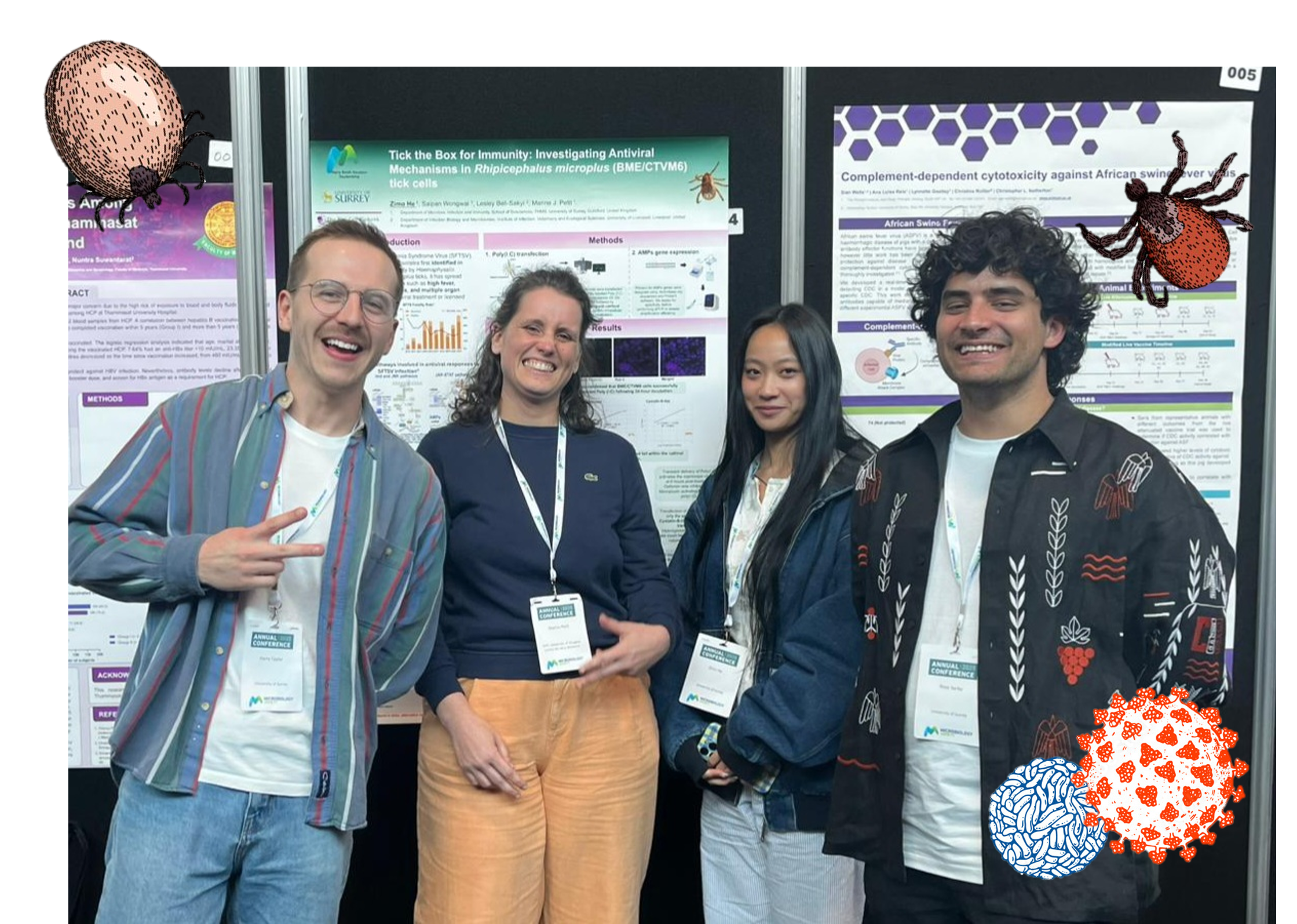
Petit Lab members - The fantas-ticks!
The Petit lab goal is to unravel how tick-borne viruses hijack tick cellular pathways, including immune pathways, to established long term, persistent infection which ultimately lead to tick-mammalian transmission! We used various system of study:
Rees Sorby (PhD student) uses tick-borne Flaviviruses and their vector cells (Ixodes Ricinus) to study long term interactions at the cellular level!
Harry Taylor (PhD candidate in collaboration with Dr. Smither at DSTL) study the response to orthonairovirus in tick cells (Hyalomma sp.) and human cells.
Zimo He(Undergraduate student) develop nanostructure to express gene in tick cells- work in collaboration with Dr. Bae (University of Surrey)
Group Leader
Dr Marine Petit is a french virologist trained in arbovirology, lecturer in Virology at the University of Surrey.
Marine’s had the chance to leave in 4 different countries, France, USA (California), Scotland, and England where she completed her PhD and post-doctoral trainings.
Currently based in Surrey Marine’s team continously develop new cellular tools and system virology approaches adapted to the study of tick and their viruses.
Outside the lab Marine love to play or listen to music and read fiction.
And as many french people Marine’s love a good meal!
TICKITS my MSCA Research – June 2021-2023
Ticks are vectors of several emergent and re-emergent arboviruses across the world representing an important public health threat. The recent rise of tick-borne virus diseases in human population is associated with the impact of global warming on tick population and life cycle. To prevent such infections, we need novel vector-based control strategies requiring a better understanding of vector-virus interactions at the molecular level.
My research project focusses on the characterization of intra-cellular interactions between Dabie bandavirus (SFTSV) and one of the tick vectors responsible for virus transmission in Asia, Rhipicephalus microplus. Following its emergence in 2009, Dabie bandavirus rapidly spread through Southeast Asian countries with a 30% lethality rate. Its viral detection in R. microplus added to the availability of R. microplus cell lines (BME/CMTV6) affords us a unique opportunity to unravel bunyavirus-tick cell interactions.
This project has received funding from the European Union’s Horizon 2020 research and innovation programme under the Marie Skłodowska-Curie grant agreement No 890970